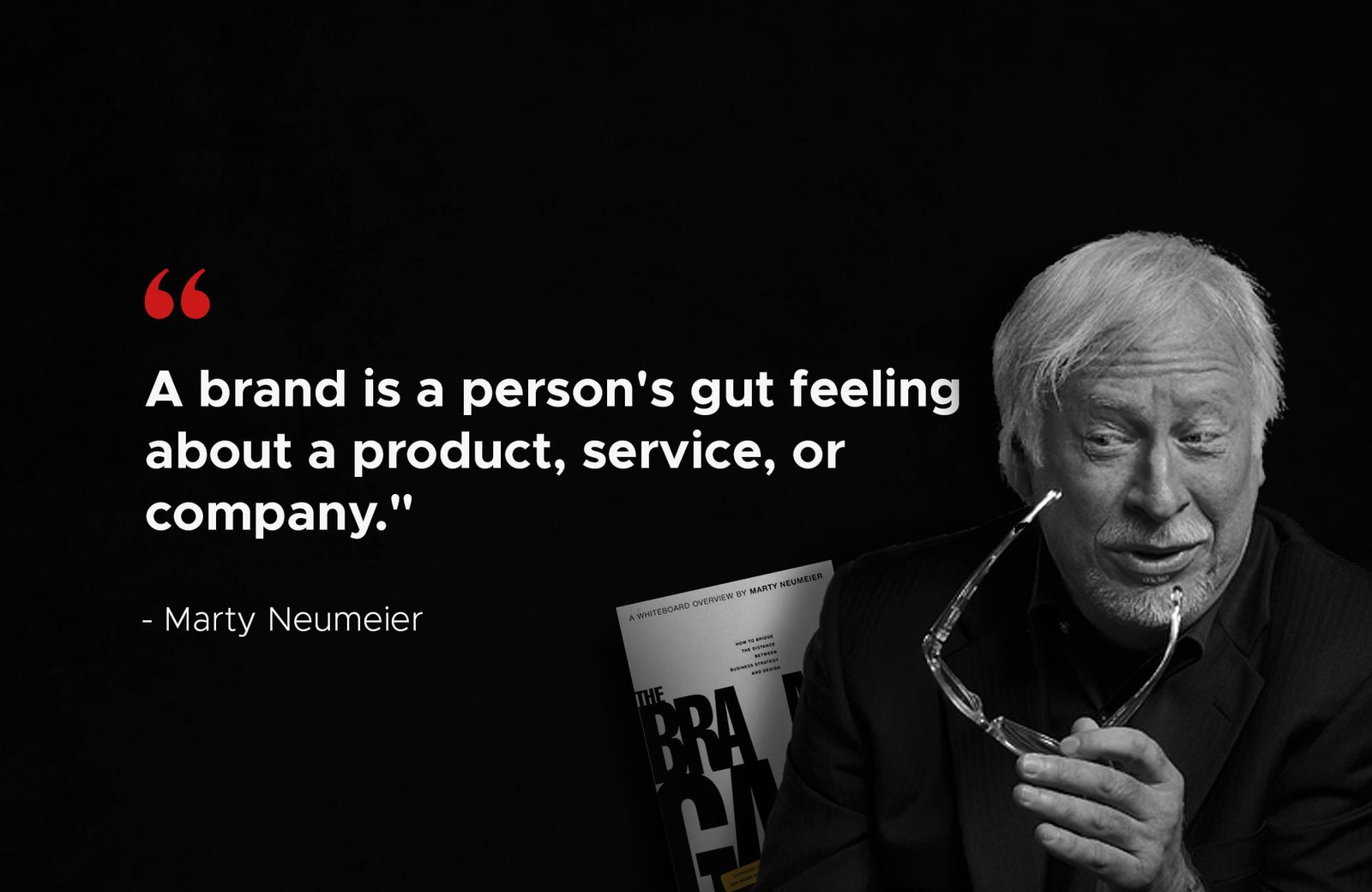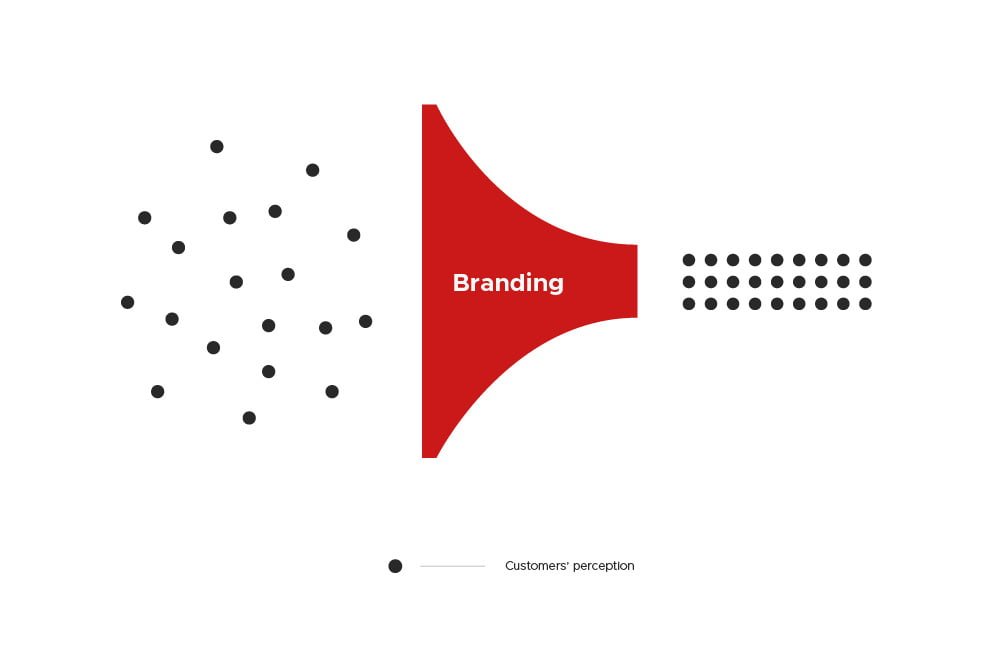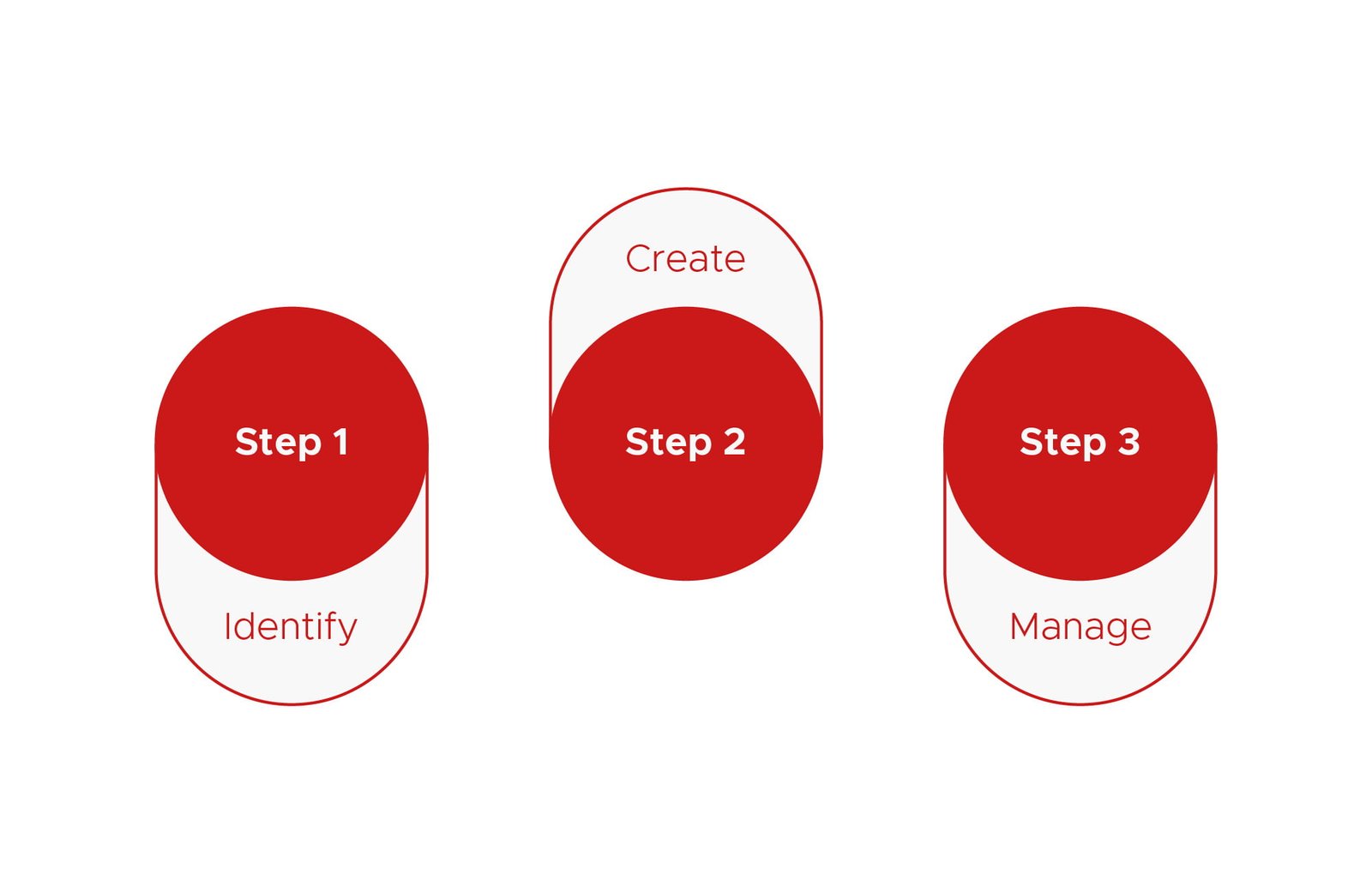A lot of people -including experts- might not understand what branding really is. Cambridge Dictionary defines branding as “the act of giving a company a particular design or symbol in order to advertise its products and services.”
This was true not long ago, but now, branding has evolved to a much deeper meaning. It’s not only about the visuals or the marketing goals anymore.
It’s important for you as a business owner to understand what branding is. So you can use it to your advantage.
To clarify and understand what branding is, let’s talk first about what isn’t branding.
What a brand isn’t
A brand isn’t a logo
Some might think if they have a logo then they have a brand. But that’s not true. Your logo is the face of your brand. in fact, a logo is a small part of branding. It’s the first touchpoint your customers will interact with but it’s not your brand.
A brand isn’t an Identity System
Even a full identity system isn’t called branding. It’s called brand identity and it’s a part of branding. Brand Identity is how you look, behave and sound like, but still not branding.
A brand isn’t a product
Some marketers talk about managing their brands, but what do they mean in managing the products, the sales, and quality. A brand is much less tangible.
Then, What a brand is
I like how Marty Neumeier defines it in his book, The Brand Gap. He said, “A brand is a person’s gut feeling about a product, service, or company.” It is the image customer creates in their minds about your brand. It’s something emotional.

That means, different customers will have different perceptions of your brand. So, it’s important to strategically influence this perception and make it work to your advantage.

And here comes the turn for branding.
Branding is the perpetual process of identifying, creating, and managing the cumulative assets and actions that shape the perception of a brand in stakeholders’ minds. As the guys on Branding Mag define it.
The steps branding and brand experts take to shape your brand is described in the definition above. Let’s have a closer look at it.
- Identifying — The process starts by identifying what you want to stand for. How do you want to be perceived by the market? What values do you want to stand for? What purpose do you want to serve? And more questions that will help you understand and define how you want your brand to be perceived.
- Creating — After you identify the brand you want to have, it’s time to create the assets you will need. This will include your visual and verbal identity and some documents to help you stay consistent with your brand message.
- Managing — This is very important to make sure you’re consistent and share the same message on all your touchpoints.

So you actively shaping your brand with your marketing efforts. And that goes beyond the visual assets and messages you send.
Customer service, company culture, and the interior design of your company are all forms of branding.
The goal of all this is to attract and keep loyal customers and other stakeholders. we build brands to be a true representation of who you are as a business, and how you wish to be perceived.
But…
What makes a strong brand?
A strong brand is well defined, easy to relate to, and has values that resonate well with the target customer.
A strong brand is authentic and communicates a consistent message across all its touchpoints. It keeps building loyal fans who trust the company and feel connected to it.
Why is branding important?
You need a well-defined brand because:
- Branding makes a memorable impression on consumers.
- It allows your customers to know what to expect from your company.
- It Transforms first-time buyers into lifetime customers.
- Making decisions becomes easier.
- A better brand means better marketing.
- It makes you stand out.
- It increases business value.
- It generates and attracts new customers.
- Improves employee pride and satisfaction.
- Creates trust within the marketplace.
- Gives you a competitive advantage over your competitors.
Should you have a brand if you’re a startup?
Branding is not only for the big boys out there. It’s also valuable for you even if you have a small shop in the corner.
Startups need a brand strategy that identifies their message, audience, and marketing channels.
It will be a much better idea to build a strong brand from the ground up instead of rebuilding it later. Ideally, you should have your branding strategy worked out before you launch your online business.
If you are just starting out a business, branding can help you with attracting the right type of customers. It will help build brand awareness and connect you with new customers.
Also being consistent as a startup will build up trust. Customers will see that you’re serious about your business and they will be willing to spend money with you. But first, you need to build that trust by connecting and understanding their needs.
Can you run a business without branding?
The answer is no. You can run a business without INTENTIONALLY branding it, but that doesn’t mean you don’t have a brand.
That means you’re letting it to luck, which means you will have less control over how customers perceive you. You will not build trust and loyal fans.
All you will be focusing on is sales and how to get more customers and not better ones.
See, our brains work as a filter. We eliminate all the noise around us and focus on what matters. Our brains do this to protect us from irrelevant information out there.
So if you didn’t stand out and differentiate your brand in the mind of your customers, you will be easily ignored by most of them.
How do you know if you have a strong brand or not?
If you could answer these 3 questions, that means you have a strong and well-defined brand:
1. Who are you?
2. What do you do?
3. Why does it matter?
If you found it difficult to articulate your thoughts and answer these 3 questions, then you have to reconsider your current brand.
Strong branding examples
Apple
We can’t talk about strong brands without talking about Apple. Apple is very clear in its branding message. Everything is modern and simple, from their products to their stores and offices. If you asked anyone on the street, they will mostly know who is Apple. Apple is more than just iPhone and Mac. They challenge the status quo and encourage creativity in each one of their customers.
Airbnb
Airbnb changed our world. Who thought of staying in a stranger’s house and willingly pay for the accommodation? Will, Airbnb made us change our thoughts and beliefs that this is what we should do. Their branding strategy made this possible and extended their brand to over 190 countries around the world.
Uber
Just as Airbnb changed our perception of accommodation, Uber changed our transportation. Now, with a click of a button, you will get a special driver who will take you from where you are to the place you wanna be. Uber understands its customers’ needs. They used that understanding to make a smart solution that changed how we think about transportation.
Okay, let’s have a look now at some great branding examples of small businesses.
Imperfect Produce
A food startup that takes food that’s too ugly to be in stores and sells it at a discounted price. This is how they describe it on their website: “Imperfect fights food waste by finding a home for ‘ugly’ produce. We source it directly from farms and deliver it to customers’ doors for 30-50% less than grocery store prices.”
Prodjuice
Prodjuce has a clean, fresh, and bright brand identity that reflects its products. They keep this consistent over their website, social posts, and products photos. because of their strong brand and how they translate it into a cohesive identity, they keep attracting their ideal customers.
Death Wish Coffee
If you want to understand what they are about, just head to their website. Their message is clear and bold. They play the ‘death’ angle with their branding and designs. Their brand is clear and obvious. I like how they choose to stand out in a specific and clear way, and their bold approach is nice and eye-catching.
What goes into branding?
Branding is a very proud topic the has a lot of elements, but here are the most important ones.
- Brand Strategy
- Logo
- Voice & Tone
- Fonts
- Color Palette
- Brand Guidelines
- Packaging
- Website
- Newsletter
- Social media
- And more
Conclusion
Having a strong brand is essential these days. If you want to have a sustainable business that attracts the type of customers you want, then you should have a strong brand that lasts forever.



